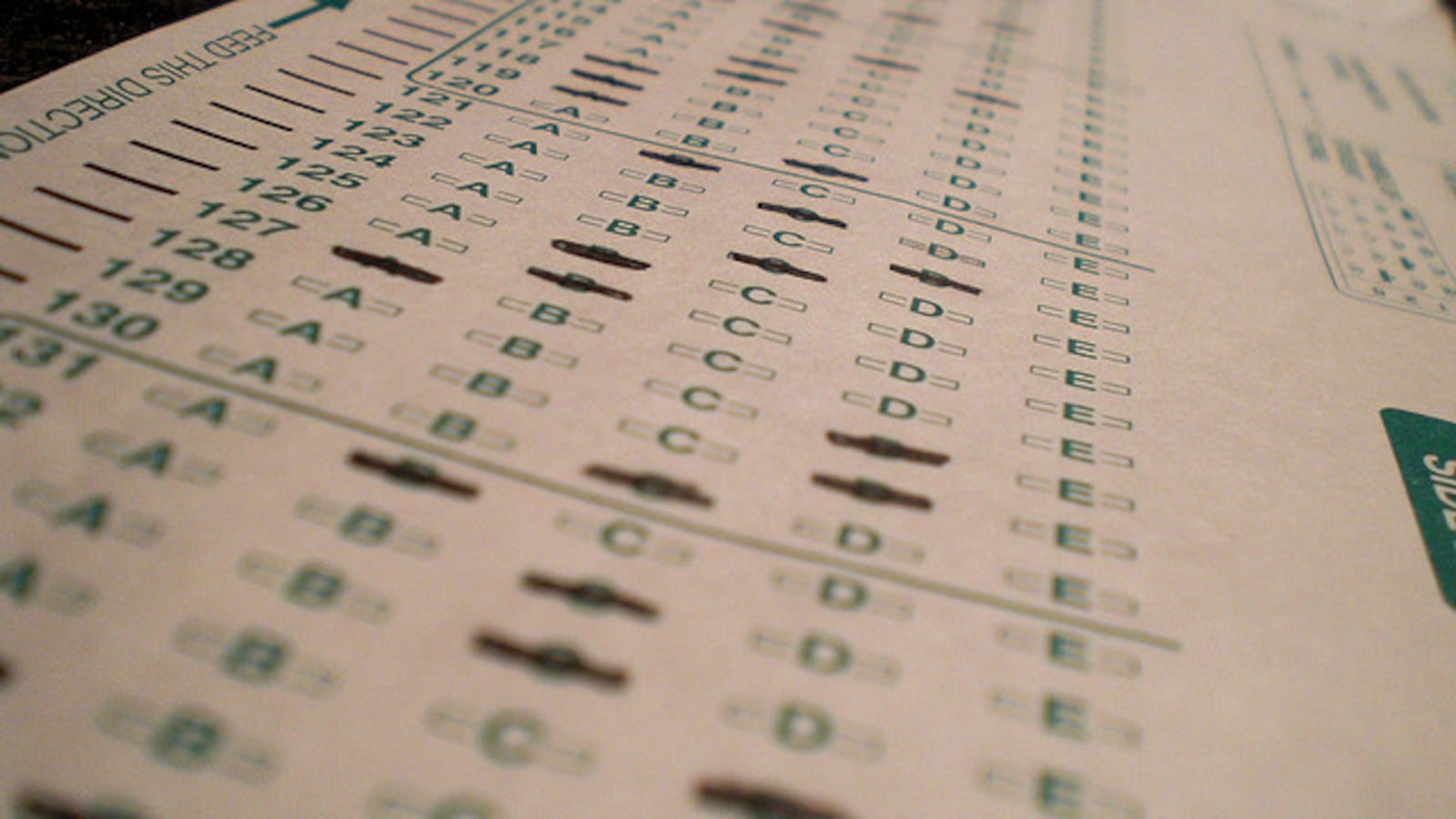The share of New York City students who passed the state English exams jumped by nearly 8 points this year to 38 percent, matching the state average for the first time, state officials said Friday. That spike beat the statewide increase by one point, and is four times greater than the city’s year-over-year increase in 2015.
City students also made smaller gains in math: 36.4 percent passed the exams in 2016, a roughly one point increase from the previous year. Statewide, about 39 percent of students passed that exam, according to state figures released Friday afternoon.
“These results represent important progress and outline real improvements across each borough of our city,” Mayor Bill de Blasio said in a statement. “We congratulate our students, families and devoted educators for this critical step forward.”
Meanwhile, 21 percent of students across the state refused to take the tests, which was about the same as in 2015, state officials said. The city’s opt-out rate, while far lower than the state’s, grew significantly in 2016. This year, 2.4 percent of city students sat out the English exams — a 71 percent jump over 2015. And 2.76 percent opted out of math, a 53 percent surge.
The statewide opt-out rate remained constant despite efforts by state officials to restore faith in the tests by making a series of adjustments. But leaders of the test boycott insisted that those changes did not go far enough and, on Friday, they said this year’s numbers indicate that movement remains strong.
“I think what it says is that parents are still extremely angry and extremely upset about assessments,” said Lisa Rudley, a parent and founder of New York State Allies for Public Education, which promotes opting out. “I just think it’s another indication that this is not going away in New York.”
State Education Commissioner MaryEllen Elia cautioned on Friday that this year’s scores were not exactly comparable to previous years because of recent policy changes, such as giving students unlimited time this year to take the tests and reducing the number of questions. She said those adjustments, combined with students’ higher skills, might explain this year’s unusually large increase in students passing the tests. However, she insisted that the tests did not become less difficult, and that they were vetted for “reliability, rigorousness and validity.”
Elia also attributed New York City’s improvements to efforts by the city education department.
“There’s been some pretty intensive teacher training in the schools across New York City,” she said, “and I know that specifically there’s been an agenda to increase writing across city schools.”
All racial groups in New York City did better on the English tests this year, meaning that the so-called achievement gap between races mostly stayed the same. Black and white students saw their pass rates increase by 7.6 percentage points, while Hispanic students made a 7.4 point gain.
Non-native English speakers, who typically score far below their peers, did not gain ground this year. Just 4.4 percent of English learners passed the English exams — the same share as in 2015 — while 13 percent passed math, a modest decrease from last year. Those rates were slightly higher than the state averages.
Students with disabilities, who also usually score well below average, saw an uptick in English pass rates to just over 9 percent, up from nearly 7 percent last year. Math scores stayed essentially flat at 11.4 percent. Those rates were just above the state’s averages.
At least some of the city’s improvement on the English tests was driven by a dramatic spike in charter school scores. The city’s charter schools posted a nearly 14 point increase, jumping from 29 to 43 percent of students passing. In math, the charter schools also outperformed district schools, with a 4.5 point increase from 44 to nearly 49 percent. Charter schools enroll about 95,000 students, or roughly 8.6 percent of students citywide.

